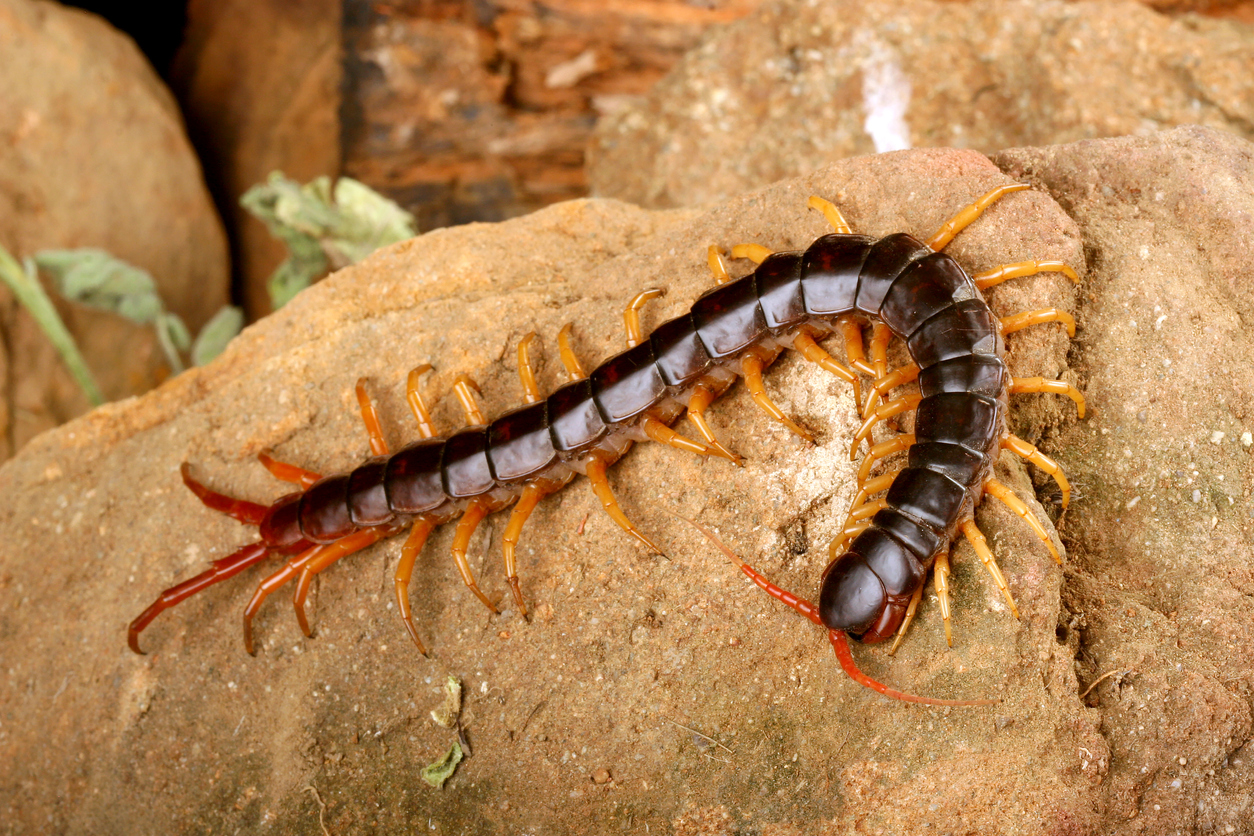Centipede Facts & Information
Overview of Centipedes
Centipedes are fascinating arthropods that belong to the class Chilopoda. These elongated, multi-legged creatures are found throughout the world, adapting to a wide range of environments from lush rainforests to arid deserts. Despite their name, centipedes do not have exactly 100 legs; the number varies among species, with some having as few as 30 legs and others possessing over 300. They are distinguished by their flattened bodies, segmented exoskeletons, and a pair of venomous, claw-like appendages called forcipules, which they use to immobilize and capture prey. Centipedes are predominantly carnivorous, feeding on insects, spiders, and other small invertebrates. Their nocturnal habits and secretive nature often make them elusive to humans, but they play an essential role in controlling pest populations and are intriguing members of the world’s biodiversity.
What do Centipedes Look Like?
Centipedes exhibit a distinctive appearance characterized by their long, segmented bodies. They range in size from a few centimeters to several inches, with some tropical species growing exceptionally large. Each body segment typically bears a pair of legs, although the number of legs varies among species, and they can range from 30 to over 300 legs. These legs are slender and delicate, often giving the centipede an undulating, graceful movement. The head segment houses a pair of prominent, venomous fangs known as forcipules, which are used to capture and immobilize prey. Centipedes come in a variety of colors, including shades of brown, reddish-brown, and sometimes even vibrant hues like green or blue. Their bodies are usually flattened, aiding in their ability to squeeze into tight crevices and navigate through their habitat. This combination of elongated, segmented bodies, numerous legs, and venomous forcipules makes centipedes easily distinguishable from other arthropods like millipedes or insects.

Not the pest you are looking for?
Check out our pest library to see what other pests we have articles on
Treating Centipedes
Addressing a centipede infestation necessitates a comprehensive assessment of the issue. The process commences with the engagement of local pest control professionals, who arrive equipped with their specialized knowledge and tools. As they investigate the affected areas, they observe the presence of centipedes in concealed locations, traversing across surfaces, and inducing concern among occupants. The pest control team adeptly identifies the centipede species and formulates a customized eradication strategy. Their approach encompasses a blend of chemical treatments and eco-friendly remedies, precisely targeting both the centipedes and their potential harborage areas. Over the course of several weeks, there is a notable reduction in the centipede population, leading to a restoration of tranquility within the premises. The guidance offered by the experts on preventive measures ensures that the unwelcome centipede presence does not resurface. Ultimately, the residence is restored to a centipede-free state, and appreciation is extended to the pest control team for their consummate professionalism and expertise.

